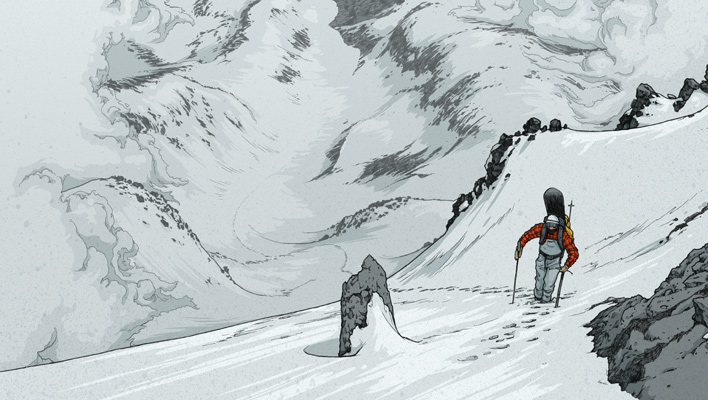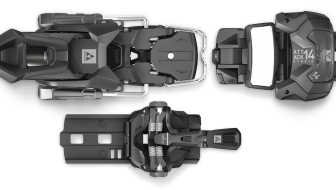The glare off the oncoming windshield bored into my weary eyes. It was the first vehicle I’d passed in more than an hour. During this long drive, my radio scrolled silently through channels.
It’s not the middle of nowhere until even the Spanish and NPR channels don’t come in, and on Highway 6 between Ely and Tonopah, Nevada, the middle of nowhere stretched on. There was nothing to do but race for the horizon.
I was, in fact, racing. A cold, mostly dry low-pressure system was moving toward the Sierra, and my plans for a May Eastern Sierra corn harvest were threatened by this cold front that would turn the corn to ice. I had a week between the end of my job in Utah and the start of my summer job in California to ride some big lines, and this damn storm was hitting during that week.
So, I decided to beat it. I’d pulled my final shift in Salt Lake ’til 11 the night before, finished packing by 2 a.m., then hopped into my truck and headed west. And there I was, speeding through hardscrabble Nevada on a Sunday morning, scrambling to reach Tioga Pass in time to get a run in that afternoon. I’d been restless to get back to the area ever since a quick trip to Dana Couloir the year prior.
One Red B ull, two coffees and many hours later, I eased to a stop in a dirt patch beneath Ellery Bowl in California. High clouds swirled over striking Sierra peaks. The air was brisk, but the snow at the base of the bowl seemed soft enough to hold an edge. I had blown past being tired somewhere east of the California line and morphed into a robot. Movement happened without conscious thought. Stride, stride, raise the climbing bars. More strides. Then I was below the 50-degree headwall. Boulders littered the icy, glazed-over slope. I pulled out crampons and ice axes, strapped the splitboard onto my back and looked toward the top, 600 vertical feet above. After 30 hours awake, my mind couldn’t register the hazards of climbing and riding down the face. So I kicked into what was left of an old bootpack and clawed up.
In the last 100 feet of climbing, fear settled in like a fog. The tenuous grip of my crampons in melted-out footholds, the awkward swaying of my overloaded pack, the consequences of slipping all woke me. With nobody to talk to, I shoved fear from my head by focusing on the climbing. Drove the ice axe tips in as far as possible. Tested their purchase. Swung one foot up, careful not to hook a pant leg with aluminum crampon teeth. Finally, I made it onto the top of Dana Plateau where the Dana Couloir gave her greeting from across Glacier Canyon. Mt. Dana loomed darkly over the landscape, and I reveled in my surroundings for a moment, amped from the climbing and concentrating on getting my splitboard into ride mode. I’d lost the race for good snow—the ride down would be a slide on boilerplate with jump turns above rock.
As I stood above my line, I thought about how traveling alone in the backcountry is considered foolhardy, and for good reason. Yet this was a mental experience that can’t be attained with even the best of partners. There is no outside influence. Nobody getting hero shots on their camera. Each decision and its possible outcomes debated by only me. It can be oppressive. Or, it can be freeing.
My mind became blank as I scooted off the plateau and over the small cornice onto my heelside edge. It held. Without pause, I whipped a jump turn and landed a few feet downslope on my toeside. Slipping downhill slowly and in control, I traversed past exposed granite. The descent of the headwall continued like this, never rushed but never stopped, not even between turns. And then I was out of the steeps and into the lower bowl, safely arching big turns in soft snow all the way to the road.
—
This reader essay first appeared in the February 2015 issue. Tell us your story, keep it to 700 words and send it to sean[at]backcountrymagazine.com subject titled “Backstory,” for a chance to be published.











Related posts:
Backstory: The Elegant Path
Backstory: Release Me
Backstory: Tucks Someday
Backstory: The Last Time I Saw Him